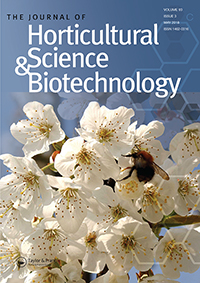Ver ítem
- xmlui.general.dspace_homeCentros Regionales y EEAsCentro Regional Mendoza - San JuanEEA La ConsultaArtículos científicosxmlui.ArtifactBrowser.ItemViewer.trail
- Inicio
- Centros Regionales y EEAs
- Centro Regional Mendoza - San Juan
- EEA La Consulta
- Artículos científicos
- Ver ítem
Bioactive compounds in vegetables, Is there consistency in the published information? A systematic review
Resumen
Nutritional research has provided a lot of evidence about the health benefits of vegetables. The aim of this review is to analyse factors, such as the genotype, the environment where plants are grown, cultural practices, post-harvest conditions among studies related to bioactive compounds in vegetables. This study includes a Systematic review of most of the published papers related to bioactive compounds present in five vegetables or their by-products. An
[ver mas...]
Nutritional research has provided a lot of evidence about the health benefits of vegetables. The aim of this review is to analyse factors, such as the genotype, the environment where plants are grown, cultural practices, post-harvest conditions among studies related to bioactive compounds in vegetables. This study includes a Systematic review of most of the published papers related to bioactive compounds present in five vegetables or their by-products. An electronic-based search of the literature published between 2000 and 2019 using the databases Scopus, Pubmed and ResearchGate, was carried out. Carrots, broccoli, lettuce, garlic and onion, whose consumption has been associated with medicinal properties were chosen. We observed that, in general, studies do not mention pre-harvest factors. In the case of broccoli and lettuce studies, at least one pre-harvest factor is mentioned, but most of the studies involving carrots do not mention any of these factors (89%). For the post-harvest factors, carrots had similar results, while the rest of the species studied were between 46 and 77%. This fact does not allow for good comparison and reproducibility. This should be emphasised in order to increase accuracy and to have stronger support to promote vegetable consumption.
[Cerrar]

Autor
Soto Vargas, Verónica Carolina;
Gonzalez, Roxana Elizabeth;
Galmarini, Claudio Romulo;
Fuente
Journal of horticultural science and biotechnology 96 (5) : 570-587. (2021)
Fecha
2021
Editorial
Taylor and Francis
ISSN
1462-0316
Documentos Relacionados
Formato
pdf
Tipo de documento
artículo
Proyectos
(ver más)
INTA/PNHFA-1106071/AR./Aplicación de las capacidades de la horticultura nacional para el desarrollo de los territorios
INTA/2019-PD-E7-I152-001/2019-PD-E7-I152-001/AR./Alimentos nutracéuticos, funcionales o para regímenes especiales.
Palabras Claves
Derechos de acceso
Restringido
 Excepto donde se diga explicitamente, este item se publica bajo la siguiente descripción: Creative Commons Attribution-NonCommercial-ShareAlike 2.5 Unported (CC BY-NC-SA 2.5)
Excepto donde se diga explicitamente, este item se publica bajo la siguiente descripción: Creative Commons Attribution-NonCommercial-ShareAlike 2.5 Unported (CC BY-NC-SA 2.5)

